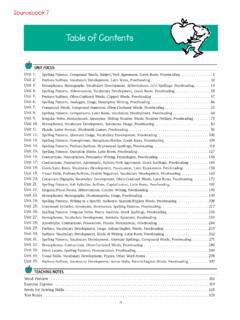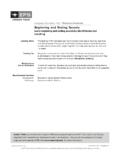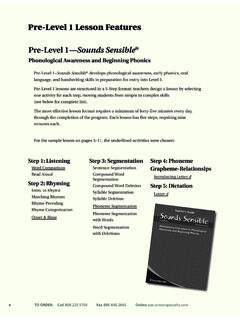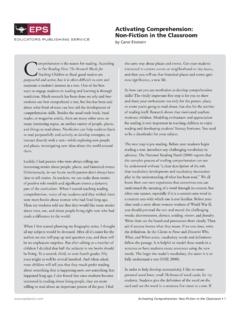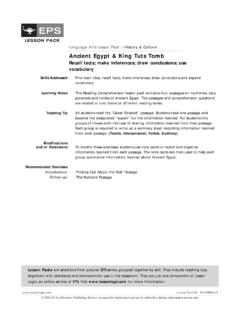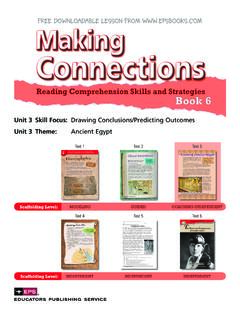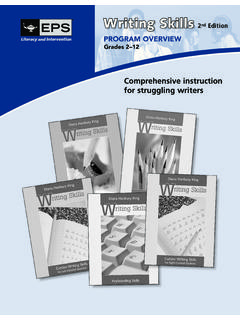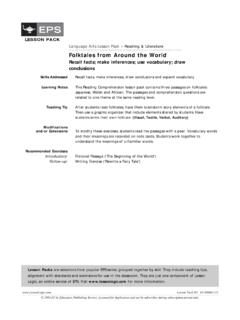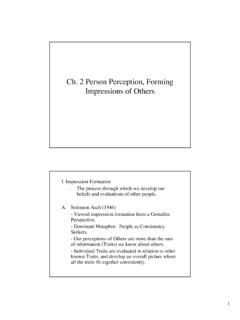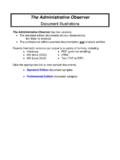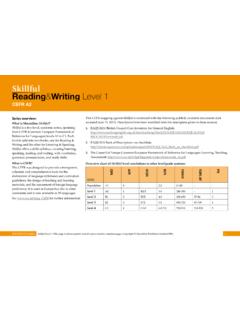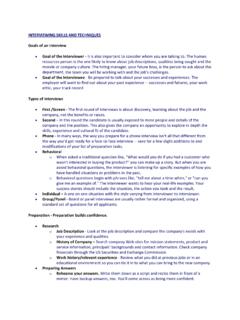Transcription of Table of Contents - School Specialty
1 Iv UNIT FOCUSUnit 1: Short/Long Vowels, Compounds, Spelling Patterns, Visual Skills, Etymologies .. 1 Unit 2: Prefi xes/Suffi xes, Short/Long Vowels, Vocabulary Development, Subject/Verb Agreement .. 10 Unit 3: Etymologies, Spelling Patterns, Visual Skills, Regular/Irregular Verb Forms .. 19 Unit 4: Spelling Patterns, Often-Confused Words, Silent Consonants, Etymologies .. 28 Unit 5: Etymologies, Prefi xes/Suffi xes, Vocabulary Development, Homophones, Spelling Patterns .. 37 Unit 6: Spelling Patterns, Apostrophes, Homophones, Plurals, Possessives, Vocabulary Development .. 46 Unit 7: Usage, Suffi x Practice, Possessive Pronouns, Compounds, Vocabulary Development .. 55 Unit 8: Prefi xes/Suffi xes, Plurals, Vocabulary Development, Spelling Patterns, Antonyms.
2 64 Unit 9: Digraphs, Consonant Blends, Homographs, Suffi xes, Etymologies .. 73 Unit 10: Etymologies, Homophones, Prefi xes/Suffi xes, Vocabulary Development .. 82 Unit 11: Contractions, Homophones, Apostrophes, Usage, Possessives, Homographs .. 91 Unit 12: Etymologies, Spelling Patterns, Plurals, Comparisons, Contractions, Vocabulary Development ..100 Unit 13: Homophones, Homographs, Unnecessary Words, Vocabulary Development ..109 Unit 14: Double Letters, Suffi xes, Usage, Spelling Patterns, Vocabulary Development .. 118 Unit 15: Etymologies, Diphthongs, Soft-Syllable Endings, Often-Confused Words, Digraphs .. 127 Unit 16: Plurals, Possessives, Subject/Verb Agreement, Consonant Blends, Etymologies.
3 136 Unit 17: Abbreviations, R-Controlled Vowels, Spelling Patterns, Plurals, Vocabulary Development .. 145 Unit 18: Prefi xes/Suffi xes, Usage, Mnemonics, Comparisons, Vocabulary Development .. 154 Unit 19: Spelling Patterns, Suffi xes, Proofreading, Diphthongs, Vocabulary Development .. 163 Unit 20: Greek/Latin Roots, Irregular Verb Forms, Usage, Suffi xes, Etymologies .. 176 Unit 21: Prefi xes/Roots/Suffi xes, Often-Confused Words, Capitals, Homophones ..181 Unit 22: Homographs, Spelling Patterns, Prefi xes/Roots/Suffi xes, Synonyms .. 190 Unit 23: Etymologies, Synonyms, Visual Skills, Unnecessary Words, Homographs .. 199 Unit 24: Antonyms, Prefi xes, Visual Skills, Vocabulary Development, Possessives, Plurals.
4 208 Unit 25: Contractions, Apostrophes, Suffi xes, Quotation Marks, Spelling Patterns ..217 Unit 26: Eponyms, Spelling Patterns, Soft-Syllable Endings, Multiple Meanings, Vocabulary Development . 226 Unit 27: Silent Letters, Homophones, Visual Skills, Contractions, Usage .. 235 Unit 28: Etymologies, Soft-Syllable Endings, Spelling Patterns, Titles, Double Letters .. 244 Unit 29: Prefi xes, Irregular Spellings, Silent Letters, Punctuation, Apostrophes .. 253 Unit 30: Homophones, Spelling Patterns, Soft-Syllable Endings, Synonyms/Antonyms .. 262 Unit 31: Etymologies, Suffi xes, Plurals, Proofreading, Soft-Syllable Endings ..271 Unit 32: Usage, Spelling Patterns, Abbreviations, Letter Format, Irregular Verb Forms.
5 280 Unit 33: Etymologies, Digraphs, Suffi xes, Vocabulary Development, Homophones .. 289 Unit 34: Apostrophes, Possessive Pronouns, Homophones, Contractions, Prefi xes/Suffi xes .. 298 Unit 35: Silent Letters, Plurals, Synonyms, Etymologies, Often-Confused Words ..307 TEACHING NOTESWord Preview ..316 Exercise Express ..319 Seeds for Sowing Skills .. 325 Build skillful Writers .. 328 Test Ready .. 329 Table of ContentsSourcebook 5vPriority Words ..330 Word Test .. 336 Skill Test .. 339 Proofreading Test ..341 Sentence Dictation Test .. 342 Achievement Battery of Tests .. 346 Evaluating Spelling ..350 Challenging the Capable Speller ..351 Students with Spelling Challenges .. 353 Suggestions for the Multiage Classroom.
6 356 Word Study Strategy .. 357 Parents as Partners .. 359 BLACKLINE MASTERSCORE WORDS .. 363 PRIORITY WORDS .. 366 PERSONAL POSTER 1 .. 367 PERSONAL POSTER 2 .. 368 PERSONAL POSTER 3 .. 369 PERSONAL POSTER 4 ..370 PERSONAL POSTER 5 ..371 INTRODUCING SPELLING .. 372 IDEAS FOR PROOFREADING .. 373 IDEAS FOR WORD STUDY .. 374 WORDS TO LEARN .. 375 WORD PREVIEW .. 376 WORD STUDY STRATEGY .. 377 STRETCH IT .. 378 FIX IT .. 379 SORT IT .. 380 ADD IT ..381 FINISH IT .. 382 FIND IT .. 383 MAKE WORD CARDS .. 384 MAKE LETTER CARDS .. 385 ACHIEVEMENT TESTS .. 386 REFERENCESS tudent Practice Books .. 389 Games and Productive Practice Ideas .. 390 Class Book Projects .. 394 Teaching Posters and Personal Posters.
7 395 Ten-Box Reusable Chart .. 396 Literature List .. 397 Answer Key .. 398 Graphic Organizer ..401 Scope and Sequence ..402 Description of Materials ..407 Order Form .. 408 Table of Contents LEVEL FIVE 73 Build Skills and Word ExperiencesBuild Visual SkillsDo the Word Preview, a visual warm-up activity, with all students. Use Core Words bright (541), sent (542), present (543), plan (544), rather (545).Teaching Notes, page 316 Build Spelling and Language SkillsChoose from among these quick tasks to customize instruction for all or selected Notes, page 319 Use Student Practice Pages 25 26 to follow up instruction for:Activity 1A Test Ready They sent a present. Our present plan is to paint the hallway with wild, bright color rather then brown or white.
8 We have all ready send for the paint and will begin the moment it comes. Whose going to help us (colors, than, already, sent, Who s, question mark) rather, dollar, alligator, inventor, prettier, beaver, sailor, deeper, cougar, faster, jogger, rooster, beggar ( , ends in ar/er/or; vowel-r ending is part of base word/suffix meaning one who/suffix meaning more; does/doesn't contain double letters; is/isn't an animal word) bright, brighter, brightest; clear, clearer, clearest; _____ (words that are comparisons) One thing that I plan to do is _____ Words that double the final letter before adding ed or ingHave students write : "Plan your day, then work your plan." Norman Vincent Peale 74 Unit 9 L E V E L F I V E B u i l d S k i l l s a n d W o r d E x p e r i e n c e sBuild Basic ConceptsChoose from among these skill-building activities to customize instruction for all or selected Notes, page 325concept oneSome words are spelled with consonant Select students to write on the chalkboard: camp/champ, sort/short, ten/then, were/where, pony/phony.
9 Note that when h follows c, s, t, w, or p the combination stands for a new sound. Have students brainstorm words that contain each digraph at the beginning, middle, and end of the word. Help students discover that words do not end with wh. Challenge some students to sort the words by nouns, verbs, and words that can be both. concept twoSome words are spelled with consonant Review digraphs (Activity 1A) to point out that these adjacent consonants make one sound. But sometimes adjacent consonants make separate sounds that blend together. Write present on the chalkboard to point out how the separate sounds pr and nt are easier to spell when you listen to the sound of each of the letters. Have students write words with consonant blends, write clues for the words, and read the clues for their classmates to identify and Write on the chalkboard: content , desert, object, present, record.
10 Have students identify the consonant blends (nt, rt, ct, pr, rd). Help students discover that these words can be pronounced in two ways, and each pronunciation has a different meaning. They are homographs (homographs are one focus of Teaching Poster 5, introduced in Unit 13). Have students use the homographs in oral and written , word analysis, more words, sorting words, parts ofspeechphonics, writing word clues, readingphonics, homographs, writing sentences, vocabulary development ch at the beginningchainchalkchaircheckerschewchoi cechargechapterch in themiddleteacherbrancheskitchenponchopur chaserancherexchangeattachedch at theendpeachtouchcoachporchmarchrichsandw ichswitchHave students write : The present day is the critical day, because each day presents itself with the potential for being significant.
